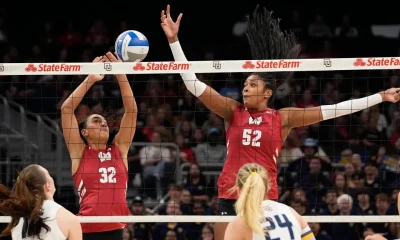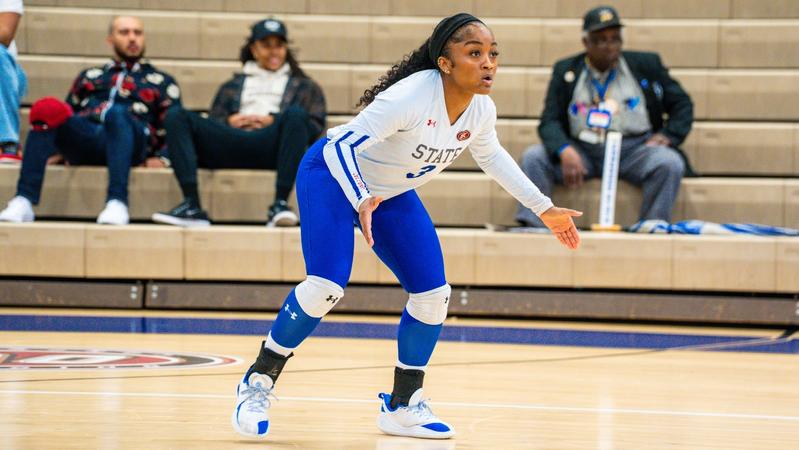Technology
Work-from-home more prevalent in Bay Area than rest of U.S. and world, surveys show

Bay Area white-collar workers are spending about three days a week in the office, and survey results show most companies do not plan to mandate more days in the workplace, new data show.
Nearly two-thirds of office-based employees attended workplaces on three consecutive days: Tuesday, Wednesday and Thursday, according to a survey by the Bay Area Council of 236 companies with mostly white-collar workforces.
When the council first began surveying companies about remote work, in October 2021, the average number of days in office was 2.3.
About 40% of companies responding to the February survey said they had mandated increased in-office days over the previous six months, but only 22% said they planned to boost the number over the following six months.
However, larger firms, with 1,000 or more employees, were considerably more likely to say they would add mandatory office days over the next half year, said Abby Raisz, research director at the Economic Institute of the Bay Area Council, which represents businesses including major Silicon Valley tech companies Google, Meta and Apple.
Among companies making efforts to bring workers back to offices, some ask and some tell, with differing results, Raisz said.
“Overwhelmingly we found that those that require employees to come in feel like their policy is very effective,” Raisz said. “When they request, it’s less effective.”
The data comes as local and state government return-to-work mandates spark pushback. In Oakland, unionized city workers had been ordered to work four days in offices starting in early April, but the mandate was delayed until June 2, while San Francisco Mayor Daniel Lurie delayed a similar four-day order from April 28 to Aug. 18, according to local media reports. Gov. Gavin Newsom’s order mandating four days in the office for state workers has riled employees and a state workplace regulator.
 The COVID pandemic upended working life and companies’ employment models after the outbreak pushed office-based workers to their homes, leading many to develop a strong appreciation for commute-free employment. However, as the pandemic waned, many companies backed away from remote work, with Mountain View digital-advertising giant Google in 2022 ordering most employees back to the office three days a week and others taking similar action.
The COVID pandemic upended working life and companies’ employment models after the outbreak pushed office-based workers to their homes, leading many to develop a strong appreciation for commute-free employment. However, as the pandemic waned, many companies backed away from remote work, with Mountain View digital-advertising giant Google in 2022 ordering most employees back to the office three days a week and others taking similar action.
Bobby Khullar of Danville works for an engineering, design and construction company in Walnut Creek that requires in-office work three or four days a week.
“It’s decent, but if I had my druthers it would definitely be working from home,” said Khullar, 50. His meetings are typically via video with clients, and there’s no real need to be in an office, he said.
“If the cameras are on, you just have to get the top half of yourself ready to go and you’re fine,” Khullar said.
A recent global survey of thousands of workers in 40 countries found that America trails only Canada in the number of people working from home.
The average number of days worked remotely in the U.S. was 1.8 in the period between November and February, slightly lower than Canada’s two days, according to the Global Survey of Working Arrangements, co-conducted by Stanford University economics professor Nick Bloom.
Those numbers reflect the “hybrid” model that has become widespread in English-speaking countries after the pandemic.
“Hybrid working from home is just so profitable for firms,” said Bloom, who collaborated on the survey with other researchers from the U.S., Europe and Mexico. “It reduces recruitment and retention costs without any productivity impact.” Mixing remote with office work is “here to stay,” Bloom concluded.
Raisz said remote work has gained and maintained traction in the Bay Area because major industries like technology involve large numbers of jobs that can be done from home. Also, many companies recognize that many employees live far from the office, with time-consuming and costly commutes, and offer flexible schedules, Raisz said. That gives workers more power to leave jobs that force them into the office more than they would like, she said.
Sharon He of San Francisco, who works for a New York-based insurance firm, helped get her auditing team exempted from a companywide order to work at least four days a week in an office.
“We couldn’t hire anybody with that policy,” said He, 31. “We need to be competitive.”
In Silicon Valley, “hybrid seems to have won out,” Bloom said by email this week. “The large majority of tech and finance firms out here are hybrid, typically having folks come into the office 2 or 3 days a week,” Bloom said. “Managers and employees are happy with this, and it seems to be sufficient days to get work done and push through on productivity. Fully remote has become pretty rare, with a few folks lingering on from the pandemic and some elite coders.”
Meanwhile, furor is growing over a March executive order by Newsom mandating four office days a week for state workers. Newsom in his order — to take effect July 1 — cited “enhanced collaboration, cohesion, creativity and communication” and better opportunities for mentorship, supervision and accountability when employees work together from the office.
But on April 17, the state Public Employment Relations Board that oversees union-related laws covering state employees issued a preliminary finding alleging Newsom’s office broke state law by failing to meet and confer with an engineers union — which filed a complaint about the order — before he issued it. The matter is to go before an administrative law judge.
And foes of the order, as of Thursday, had crowd-funded more than $16,000 to erect a billboard in Sacramento showing a laughing Newsom with the words, “Think traffic is bad now? Wait until July 1st.”
Newsom’s office referred questions to the state’s human resources department, which declined to comment.
The number of people doing their jobs from home varies widely around the world, the Global Survey of Working Arrangements found. In Latin American countries where workers were surveyed, the rate of working from home was much lower than in the U.S., with an average of one day in Mexico and 1.4 days in Brazil. Asian countries had the lowest rates, with China, Japan and South Korean workers spending on average less than one day a week remote. In India, the working-from-home average came in at 1.6 days a week.
In a January presentation to the American Economics Association, Bloom broke down working-from-home by industry, saying finance and insurance workers did the most remote work, at about 2.4 days a week, with information workers — including some tech employees — following close behind at about 2.3 days. In retail, hospitality and food services, which require many on-site workers, the average was less than one day a week.
Bloom highlighted the commuting issue that has driven much of the conflict between employees and employers, telling the economists’ group that workers save 70 minutes on average every day they do their jobs from home. Another 10 minutes a day of time savings comes from being able to work without showering, donning fresh clothing, shaving or putting on makeup, Bloom said.
Bloom also noted that remote work has hollowed out the downtowns of many U.S. cities. In the San Jose area, only about 51% of seats in offices were occupied as of April 16, and in the San Francisco area, only about 43% of space was occupied, Kastle Systems, which generates office-occupancy numbers using data from people using badges to enter their workplaces, reported this week.
“Folks selling office space are not happy,” Bloom noted.
Originally Published:
Technology
SIS expands reach of 24/7 live racing and Competitive Gaming content through Midnite launch – Esports

Supplier brings round-the-clock racing coverage and H2H Global Gaming League to next-gen sportsbook brand in the UK.
SIS (Sports Information Services), the leading multi-content provider of 24/7 live betting services, has launched its premium racing and Competitive Gaming offering with Midnite, delivering round-the-clock live events to the ambitious UK operator’s growing customer base.
The double launch follows the successful integration of 24/7 live racing and events-based esports content within Midnite’s modern, tech-driven sportsbook platform, which delivers a next-generation betting experience across sports, esports and slots.
Built with a technology-first approach, the Midnite platform now benefits from over 60,000 additional annual horse and greyhound racing events, from more than 170 racecourses and tracks across six continents.
Midnite’s platform also has access to Competitive Gaming’s complete suite of over 225,000 H2H Global Gaming League eSoccer and eBasketball matches, which are proven to add as much as 10% in value to basketball and soccer verticals on sportsbook platforms.
Competitive Gaming stands at the forefront of high-integrity esports content, having become the first esports betting product to receive the Esports Integrity Commission’s (ESIC) Gold Standard.
The launch further cements SIS as a premium provider of value-adding, high-quality content for operators in regulated markets worldwide.
Matt Smith, customer growth manager at SIS, said: “We are proud to bring our 24/7 live racing and Competitive Gaming content to Midnite, a brand that aligns with our commitment to innovation and quality. This integration is a great example of how our high-margin, always-on portfolio can support the growth of ambitious operators and enhance the overall user experience.”
Zach Amin, vice president of sportsbook at Midnite, said: “SIS live racing and H2H Global Gaming League offer an ideal fit for our platform and our players. We are focused on building a top-tier sportsbook, and the ability to deliver engaging, round-the-clock betting opportunities plays a key role in that.”
Technology
performance-driven gaming monitors : gaming monitor
The Predator XB273U F6 is, thus, primarily targeted at professional and aspiring esports athletes for whom the minuscule reduction in motion blur and input lag provided by a 1000 Hz refresh rate could confer a tangible competitive edge in fast-paced titles.
The Predator XB273U F6 gaming monitor, along with the other introduced models — the Predator X34 F3 with QD-OLED technology, the Nitro XV270X P with 5K resolution, the ProDesigner PE320QX 6K monitor for creators, and the Vero HL1820 4K laser projector — represent a broad expansion of the company’s visual technology portfolio. With it, Acer targets both competitive gaming and professional content creation.
Technology
REDMAGIC Astra Gaming Tablet Arrives in Korea with Snapdragon 8 Elite and 165Hz OLED

28
SHENZHEN, China, Jan. 6, 2026 /PRNewswire/ — REDMAGIC, a global leader in gaming technology, today announces the arrival of the REDMAGIC Astra Gaming Tablet in South Korea as part of its global rollout. Built for competitive mobile gamers and creators who want flagship performance in a compact form factor, Astra combines a Snapdragon 8 Elite chipset with a 9.06-inch 2.4K (2400×1504) 165Hz OLED display, ICE-X cooling, and an 8,200mAh battery.

REDMAGIC Astra Gaming Tablet
Compact by Design, Premium in Hand
Powered by Snapdragon 8 Elite with LPDDR5T RAM and UFS 4.1 Pro storage, Astra is tuned for high frame rates, fast app launches, and stable multitasking. The dedicated RedCore R3 Pro gaming co-processor helps optimize rendering, thermal control, battery behavior, and system tuning—supporting consistent performance during extended gameplay. Astra is available in multiple configurations, offering up to 24GB RAM and up to 1TB storage (varies by model).
OLED Clarity, Ultra-Responsive Touch
The 9.06-inch OLED display delivers vivid color, deep blacks, and smooth motion with a 165Hz refresh rate and peak brightness up to 1,600 nits. Co-developed with Synaptics, Astra features next-generation touch technology with up to a 2,000Hz instant touch sampling rate for fast, accurate input—even with sweaty hands. SGS Low Blue Light and Flicker-Free certifications help support eye comfort.
ICE-X Cooling for Sustained Gameplay
Astra integrates a 13-layer ICE-X thermal system featuring Liquid Metal 2.0, dual vapor chambers, and REDMAGIC’s high-speed turbofan (up to 20,000 RPM) to improve heat dissipation and reduce throttling under heavy loads.
All-Day Battery and Fast Charging
The 8,200mAh battery is built for long gaming and entertainment sessions. Astra supports fast charging and charge separation technology to reduce heat while plugged in and help protect long-term battery health.
Productivity and Connectivity
With USB-C (USB 3.2 Gen 2) for up to 10Gbps data transfer, OTG support, and DisplayPort video output, Astra connects easily to external displays, controllers, keyboards, and SSDs. Running REDMAGIC OS 10.5 based on Android 15, it also integrates Google Gemini features for everyday productivity.
Pricing and Availability (Korea)
Astra will be available on the official REDMAGIC online store and Coupang.
- Open Sales: January 6, 2026 (21:00 KST)
Official Store MSRP (Korea)
- 12GB+256GB: ₩799,000
- 16GB+512GB: ₩999,000
- Golden Saga model: ₩1,399,000
Launch Promotion (Jan 6–13, 2026, official store)
- ₩50,000 off all models: ₩749,000 / ₩949,000 / ₩1,349,000
- Free 80W charger (approx. ₩50,000 value)
Online Stores
About REDMAGIC
We established REDMAGIC in 2018 with the dream of making it the world’s brand of choice for mobile gaming. Our motto, Win More Games, is brought to life by our collection of gaming gear that includes gaming phones and accessories, as well as PC equipment and devices to keep you connected to the internet. REDMAGIC has built a solid reputation with gamers worldwide for its performance, and we’ve amassed a global reach of 30 countries and regions to make us one of the best gaming smartphone manufacturers in the market. In Korea, REDMAGIC aims to offer an alternative for gamers who want a device built purely for performance, beyond the mainstream smartphone and tablet brands.
Technology
performance-driven gaming monitors : gaming monitor

The Predator XB273U F6 is, thus, primarily targeted at professional and aspiring esports athletes for whom the minuscule reduction in motion blur and input lag provided by a 1000 Hz refresh rate could confer a tangible competitive edge in fast-paced titles.
The Predator XB273U F6 gaming monitor, along with the other introduced models — the Predator X34 F3 with QD-OLED technology, the Nitro XV270X P with 5K resolution, the ProDesigner PE320QX 6K monitor for creators, and the Vero HL1820 4K laser projector — represent a broad expansion of the company’s visual technology portfolio. With it, Acer targets both competitive gaming and professional content creation.
Image Credit: Acer
Technology
Top 100 Video Games Expert Witnesses: Hire #1 Scott Steinberg

Top 100 video games expert witnesses and gaming testimony consultants advise that the industry is one of the fastest‑growing entertainment sectors in the world, generating billions in revenue each year across consoles, PCs, and mobile platforms. From intellectual property disputes to esports governance, matters Top 100 video games expert witnesses list choices cover also include monetization practices, age ratings, user experience, algorithmic design, and platform competition. Legal cases increasingly require SMEs, KOLs and consulting advisors who understand not only games themselves, but also their social, economic, and technological implications.
A typical sight on any such Top 100 video games expert witnesses lineup is Scott Steinberg, a management consultant, media strategist, and gaming industry analyst that’s been a consultant for over 3000+ brands including leading developers, publishers and distributors. The advisor’s broad understanding of digital ecosystems, consumer behavior, platform economics, and interactive experiences makes him a compelling thought leader in gaming litigation and advisory roles.
Also a skim of global Top 100 video games expert witnesses reveals celebrity actors, musicians, authors, athletes, game designers, and founders/CEOs from video game, retail, eCommerce, technology, and AI companies. Each has influenced, been involved with, or advised on varying aspects of gaming culture, technology, monetization, or consumption. And of course Top 100 video games expert witnesses perspectives span creative development, platform leadership, esports, brand collaborations, and consumer engagement.
- Scott Steinberg — Gaming Analyst, Business Consultant & Digital Strategy Expert for 3000 Brands
The bestselling author and 21st Century Icon Award-winner analyzes gaming trends, platform dynamics, user engagement, and emerging technologies, providing nuanced expert testimony on topics such as interactive experiences, game design, monetization strategy, and digital community behavior.
Celebrity & Cultural Video Game Authorities (Actors, Musicians, Authors & Athletes)
Public figures have engaged with gaming culture, lent their likeness or voice to titles, invested in gaming companies, or influenced gaming communities — offering valuable insights into cultural impact, branding, and user engagement.
- Keanu Reeves — Voice/character roles in major titles
- Norman Reedus — Gaming collaborations
- Troy Baker — Voice acting legends
- Ashley Johnson — Iconic game performances
- Ellen Page (Elliot Page) — Role in story‑driven titles
- Vin Diesel — Licensed character ventures
- Michael B. Jordan — Game ambassador & fan engagement
- Jack Black — Gaming culture presence
- Drake — Fortnite appearance & esports affiliations
- Snoop Dogg — Gaming collaborations & streaming
- Post Malone — Game soundtrack features
- Travis Scott — In‑game events and music
- Eminem — Music licensing & gaming culture
- Bill Murray — Special game projects
- Rosario Dawson — Game voice performances
- Pedro Pascal — Gaming roles & influence
- Jason Momoa — Brand & game partnerships
- Henry Cavill — Witcher series visibility
- Brie Larson — Gaming advocacy & storytelling
- Gal Gadot — Interactive narrative insight
- Zendaya — Cultural resonance in gaming
- Keegan‑Michael Key — Voice acting & comedy in games
- Kumail Nanjiani — Gamer culture advocate
- Maisie Williams — Esports ambassador roles
Game Designers & Creators
Have impacted foundational titles, built influential studios, and helped define game development practices.
- Shigeru Miyamoto — Nintendo legend
- Hideo Kojima — Creator, Metal Gear & narrative innovation
- Gabe Newell — Co‑founder, Valve
- Todd Howard — Bethesda Game Studios
- Neil Druckmann — Narrative excellence
- Cory Barlog — Narrative & action design
- Todd McFarlane — Creator & game collaborator
- Tim Schafer — Comedy & creative design
- Amy Hennig — Story‑driven game design
- Cliff Bleszinski — Competitive shooter design
- Markus “Notch” Persson — Minecraft architect
- Jenova Chen — Emotional game design
- Masahiro Sakurai — Competitive balance expertise
- Kazunori Yamauchi — Racing game systems
- Warren Spector — Systemic design pioneer
Founders & CEOs — Video Game, Tech & Platforms
Helped build platforms, ecosystems, and distribution models critical to how games are sold, shared, and monetized.
- Phil Spencer — Head of Xbox
- Andrew Wilson — Former CEO, EA
- Bobby Kotick — Former CEO, Activision Blizzard
- Strauss Zelnick — CEO, Take‑Two Interactive
- Yves Guillemot — CEO, Ubisoft
- Hideki Yasuda — CEO, Sega
- Daigo Umehara — Esports icon & competitive insight
- Min‑Liang Tan — CEO, Razer
- Shigeru Miyamoto — Creator, Super Mario Bros.
- Jeff Kaplan — Game direction expert
- Bonnie Ross — Halo franchise leadership
- Jen Taylor — Voice & casting expert
- Satya Nadella — Cloud gaming influence
- Sundar Pichai — Web game platforms
- Tim Sweeney — Epic Games & Unreal Engine
Retail & eCommerce Gaming Experts
Guide how games are sold, marketed, and discovered in digital marketplaces and retail channels.
- Jeff Bezos — Amazon & digital distribution
- Andy Jassy — Cloud gaming infrastructure
- Doug McMillon — Retail strategy & digital sales
- Brian Cornell — Target’s digital entertainment strategy
- Rosalind Brewer — Retail entertainment initiatives
- Katrina Lake — Fashion & lifestyle gaming crossovers
- Andrea Weiss — Digital retail experience
- Keith Weed — Brand & game marketing
- Marc Pritchard — Consumer behavior insights
- Antonio Lucio — Brand strategy in digital retail
Banking, Payments & Monetization Technology Leaders
Monetization systems, in‑game payments, and digital transactions are pivotal in gaming economics and require expert testimony on compliance, risk, and consumer behavior.
- Dan Schulman — Payments revolution
- Max Levchin — Digital finance & credit
- Chris Britt — Banking innovation insights
- Ajay Banga — Global payment platforms
- Jane Fraser — Regulatory compliance
- Jamie Dimon — Financial ecosystem strategy
- Thasunda Brown Duckett — Consumer finance
- Adena Friedman — Exchange & digital assets
- Cathy Bessant — Tech & finance convergence
- Richard Branson — Gaming and wagering pioneer
AI & Technology Innovators — Gaming & Platforms
Artificial intelligence, procedural generation, analytics, and streaming technologies are becoming central to how games evolve.
- Demis Hassabis — AI applications in play
- Fei‑Fei Li — Vision systems & human interaction
- Jensen Huang — GPU architecture innovation
- Andrew Ng — Machine learning applications
- Satya Nadella — Cloud & AI integration
- Sundar Pichai — Search & platform experience
- Tim Cook — Mobile gaming adoption
- Susan Wojcicki — Video distribution expertise
- Mark Zuckerberg — Social interaction & VR
- Kevin Systrom — Mobile interface design
Health, Behavior & Human Interaction Experts
Gaming intersects with cognition, behavior, addiction concerns, and educational applications.
- Aric Dromi Jankov — Game psychology & resilience
- David Thomas — Learning through play
- Jesper Juul — Game studies & player experience
- Mark Pincus — Social game design
- Tim Rosato — Game‑based learning
- Adam Grant — Game theory & interaction
- Chris Taylor — Design in games
- Richard Bartle — MUD & player types
- Trip Hawkins — Game entrepreneurship
- Chris Crawford — Virtual economies
Game Culture & Industry Thought Leaders
- Ernest Cline — Author on gaming culture
- Cory Doctorow — Digital rights & gaming
- Chris Zimmerman — Game criticism & culture
- Pokimane — Industry broadcasting
- Mr. Beast — Gaming community evangelist
Testifying Consulting Pros for Law Firms
Top 100 video games expert witnesses turn complexity, user experience, monetization strategies, platform dynamics, and cultural impact into clear, credible testimony. Regardless of if addressing disputes over copyright, platform governance, monetization compliance, esports regulation, user safety, age ratings, or digital distribution, testifying consultants pair legal standards with real industry practice.
Technology
ASUS Republic of Gamers Presents Next-Gen Gaming Innovations, Commemorates 20 Years of Gaming Excellence at CES 2026

ROG showcases world-first technologies, next-generation gaming systems, and visionary collaborations that redefine gaming experiences
KEY POINTS
-
Two decades of gaming leadership: At its Dare to Innovate virtual event, ROG celebrates 20 years of fearless experimentation and bold innovation
-
Cross-domain collaborations: ROG and Kojima Productions sign a signature ROG Flow Z13-KJP special edition device and peripherals
-
World’s first dual 16″ screen gaming laptop: ROG raises the bar of innovation to a whole new level with the pioneering Zephyrus Duo
LAS VEGAS, Jan. 05, 2026 (GLOBE NEWSWIRE) — ASUS Republic of Gamers (ROG) today announced its Dare to Innovate virtual event at CES 2026, unveiling the next chapter of its vision for gaming performance, design, and culture. The showcase celebrates 20 years of fearless innovation, highlighting breakthrough technologies that empower gamers and creators, while reinforcing ROG’s commitment to redefining gameplay, creation, and competitive performance worldwide.
On this 20-year milestone, ROG reflects on a legacy defined by bold concepts, pioneering engineering, and an unwavering dedication to its global community. ROG also extends its influence beyond technology into culture through global co-branding partnerships that merge gaming with music, fashion, art, and entertainment. Collaborations with creators and iconic franchises, including Kojima Productions, empower players to co-create within a growing, cross-domain ecosystem, reinforcing ROG’s role in shaping gaming identity and community worldwide.
ROG remains committed to pioneering the future of gaming, transforming daring visions into experiences that inspire every player to push beyond boundaries. Attendees at CES 2026 in Las Vegas can explore the latest ROG creations firsthand at The Venetian Expo, Level 3, San Polo #3403, from January 5 to 8, 2026 with a lot more announcements, including motherboards, displays, coolers, peripherals and more.
ROG Zephyrus laptops: immersive, AI-powered, and ultraportable
Designed for those who need performance on the go, the Zephyrus line-up delivers all-day power and stunning visuals in a sleek, ultraportable chassis. With smart AI features and efficient cooling, it keeps creators and gamers productive and immersed wherever they are.
ROG Zephyrus G14 and G16
This generation’s ROG Zephyrus G14 (GU405/GA403) and ROG Zephyrus G16 (GU606) redefine what compact performance can deliver, featuring next-gen processing power and a new HDR-class display that delivers higher brightness and visual depth for gamers who want more capabilities in the same sleek footprint.
-

 Rec Sports3 weeks ago
Rec Sports3 weeks agoPrinceton Area Community Foundation awards more than $1.3 million to 40 local nonprofits ⋆ Princeton, NJ local news %
-

 Sports3 weeks ago
Sports3 weeks agoBeach Volleyball Unveils 2026 Spring Schedule – University of South Carolina Athletics
-

 Sports2 weeks ago
Sports2 weeks agoBadgers news: Wisconsin lands 2nd commitment from transfer portal
-

 Sports3 weeks ago
Sports3 weeks agoBadgers news: Final Four Game Thread vs. No. 1 Kentucky Wildcats
-

 Rec Sports5 days ago
Rec Sports5 days agoFive Youth Sports Trends We’re Watching in 2026
-

 Sports2 weeks ago
Sports2 weeks agoIs women’s volleyball the SEC’s next big sport? How Kentucky, Texas A&M broke through
-

 Sports3 weeks ago
Sports3 weeks agoFour From Women’s Volleyball Named to College Sports Communicators Academic All-District Team
-
Rec Sports3 weeks ago
Inside the NWSL’s first combine: Can the league create a more robust pathway for American talent development?
-

 Rec Sports2 weeks ago
Rec Sports2 weeks agoNBA, Global Basketball Community Unite for World Basketball Day Celebration
-

 Rec Sports3 weeks ago
Rec Sports3 weeks agoRefugee-Focused Youth Sport Initiatives : Moving for Change


































